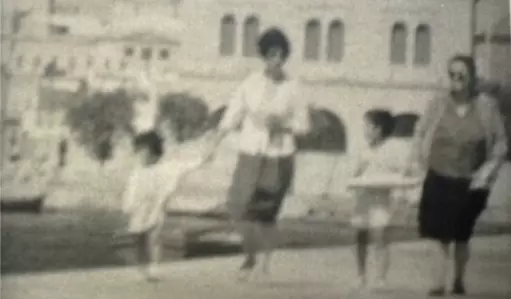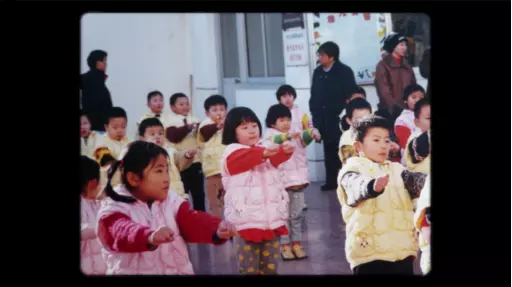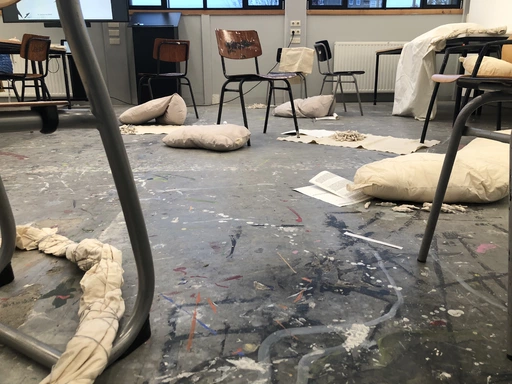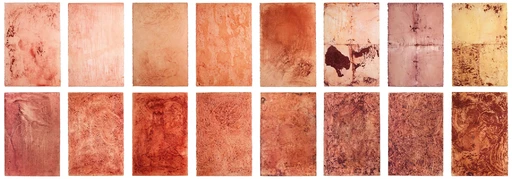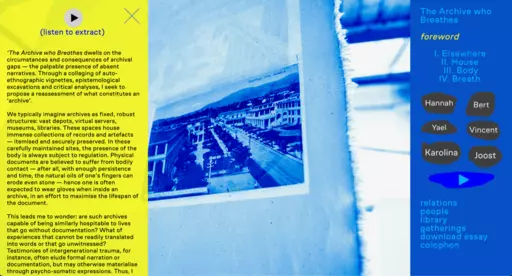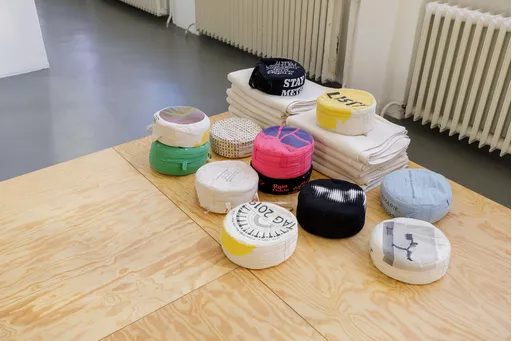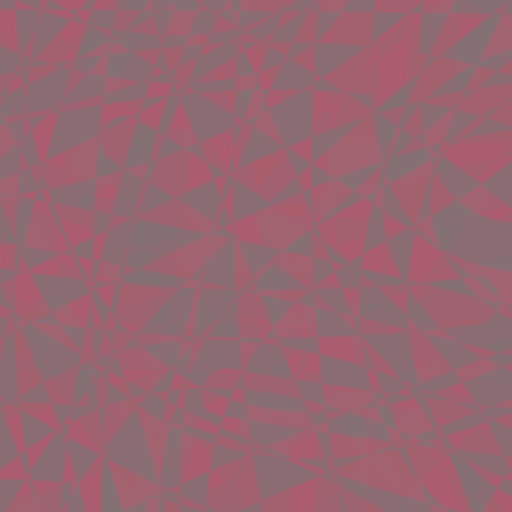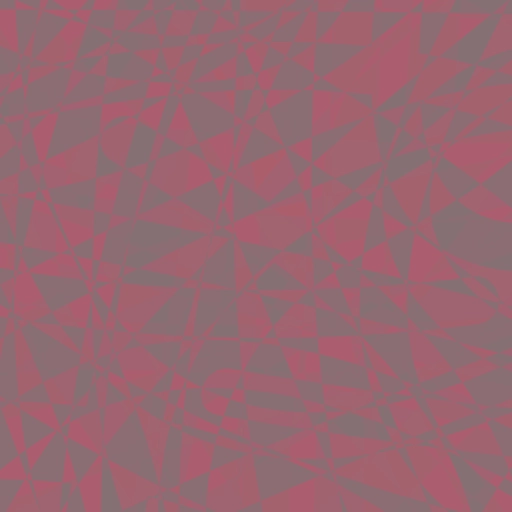
Bodies and Breath: Embodied Research & Writing
part of: Body and power(lessness)Bodies and Breath: Embodied Research & Writing
We invite you to engage with the multitude of voices, textures, places, pauses, colors, breaths contained within the pages of this dossier.
Essay: dis-membered / re-membered by Asli Özgen
Moving in and out of the confines of state archives, Asli’s approach to research and writing directs us how to be attentive to the vast and deep frequencies of everyday life of people whose boundedness to histories exists beyond the presence of the silence in the archive. It is along with them that we can remember our own boundedness to history and what it means to exist with one another.
dis-membered / re-membered
contested pasts, archives, and counter-memories of diaspora
In this essay Asli Özgen, urged by the irretrievable loss of her grandmother's memories of displacement, as a member of Bulgarian-born Turkish-speaking Muslim minority who experienced displacement and exile from Bulgaria in the 1950s, pieces together a complex map of items scattered across various archives. To encounter the fragile memories of Turkish diaspora in the Netherlands.
Film: The Timeless Morphs: 3 Body Sessions by Kexin Hao
Body Sessions
Visual essay by and interview with Kexin Hao
"To remember, is to position oneself sound and still in the great flood of history. To remember yourself, is to ask others not to forget."
Interview: Soft Histories & Text: My body is a house by Jeanine van Berkel
MY BODY IS A HOUSE
"Mama couldn’t talk for ten years after we left the island. She left all her words behind because there was nothing left to say. Sometimes grief is slow like that."
Essay: SOMEWHERE A BIT FURTHER AWAY FOOTHILLS OF THE APPALACHIAS NORTH CAROLINA, SOUTHEAST UNITED STATES by Helena Sanders
Slipping between the practical and the symbolic, economic and aesthetic, contemporary and historical, in her text color is a carrier that takes us through a vast array of relationships between the world and our selves. Made of desire as much as necessity, color takes us across lethal mining sites, global economies, and aesthetic hierarchies, prompting us to attune ourselves to the many registers and positions our bodies occupy at a given time.
Coming back to the question what is color, and resisting any single interpretation, can color, kaleidoscopically, prompt us to attune ourselves to our multifold experiences and registers of meaning—to the many worlds—we already inhabit? In the words of Helena: “…if one language or another limits us and censors how we are able to narrative our stories and history through inherent bias, then can color provide a tool through which we can sing ourselves back into the world?”
SOMEWHERE A BIT FURTHER AWAY
FOOTHILLS OF THE APPALACHIAS
NORTH CAROLINA, SOUTHEAST UNITED STATES
““When we look out into a field, muddied and swamped with coal ash slurry in the dead of winter, the first thing we are struck with is a seeming absence of colour. What was green is now flooded with lifeless greys, rancid-butter beiges and cold blue-black. Is there a way back from burnt coal?” – Helena Sanders”[/i]
Project: The Archive who Breathes by Hannah Dawn Henderson
“This is the embodied archive — the archive ever circulating within you, for which you are both the abode and the custodian. It exists there, along the tide of your breath, cradled by your ribs, always present and animated — confirming that amongst the ghosts, there is surely life.” – Hannah Dawn Henderson
The Archive who Breathes
On the circumstances and consequences of archival gaps
The Archive who Breathes is a project by Hannah Dawn Henderson. You are invited to take a look at the website that belongs to this project. It is specially designed by Lotte Lara Schröder, and you can meander through a collection of annotations, footnotes and marginalia by Hannah's friends, close relations and peers, relations that have been forged over longer periods of time. On the website you can also find Hannah's essay.
Essay: De schrijver als lichaam en het lichaam als schrijver by Moosje M Goosen
De schrijver als lichaam en het lichaam als schrijver
Hoe opnieuw te leren leven en schrijven met ziekte?
"Wanneer ik aan Virginia Woolf en Susan Sontag denk, denk ik aan vorm. [...] vorm geven aan een nieuwe situatie. Gedachten, gevoelens, ervaringen, door het lichaam ingegeven."
